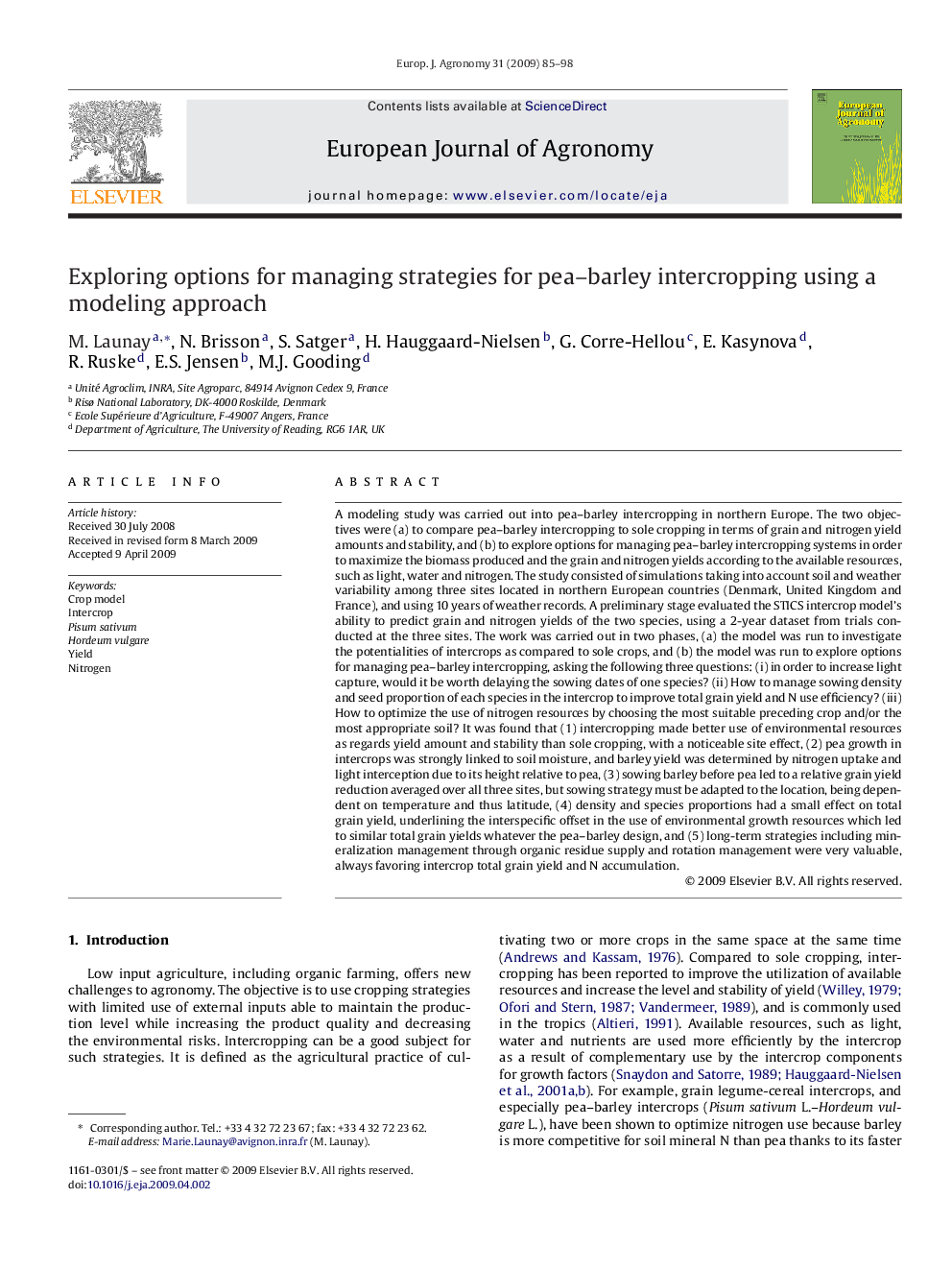| کد مقاله | کد نشریه | سال انتشار | مقاله انگلیسی | نسخه تمام متن |
|---|---|---|---|---|
| 4509425 | 1624509 | 2009 | 14 صفحه PDF | دانلود رایگان |

A modeling study was carried out into pea–barley intercropping in northern Europe. The two objectives were (a) to compare pea–barley intercropping to sole cropping in terms of grain and nitrogen yield amounts and stability, and (b) to explore options for managing pea–barley intercropping systems in order to maximize the biomass produced and the grain and nitrogen yields according to the available resources, such as light, water and nitrogen. The study consisted of simulations taking into account soil and weather variability among three sites located in northern European countries (Denmark, United Kingdom and France), and using 10 years of weather records. A preliminary stage evaluated the STICS intercrop model's ability to predict grain and nitrogen yields of the two species, using a 2-year dataset from trials conducted at the three sites. The work was carried out in two phases, (a) the model was run to investigate the potentialities of intercrops as compared to sole crops, and (b) the model was run to explore options for managing pea–barley intercropping, asking the following three questions: (i) in order to increase light capture, would it be worth delaying the sowing dates of one species? (ii) How to manage sowing density and seed proportion of each species in the intercrop to improve total grain yield and N use efficiency? (iii) How to optimize the use of nitrogen resources by choosing the most suitable preceding crop and/or the most appropriate soil? It was found that (1) intercropping made better use of environmental resources as regards yield amount and stability than sole cropping, with a noticeable site effect, (2) pea growth in intercrops was strongly linked to soil moisture, and barley yield was determined by nitrogen uptake and light interception due to its height relative to pea, (3) sowing barley before pea led to a relative grain yield reduction averaged over all three sites, but sowing strategy must be adapted to the location, being dependent on temperature and thus latitude, (4) density and species proportions had a small effect on total grain yield, underlining the interspecific offset in the use of environmental growth resources which led to similar total grain yields whatever the pea–barley design, and (5) long-term strategies including mineralization management through organic residue supply and rotation management were very valuable, always favoring intercrop total grain yield and N accumulation.
Journal: European Journal of Agronomy - Volume 31, Issue 2, August 2009, Pages 85–98